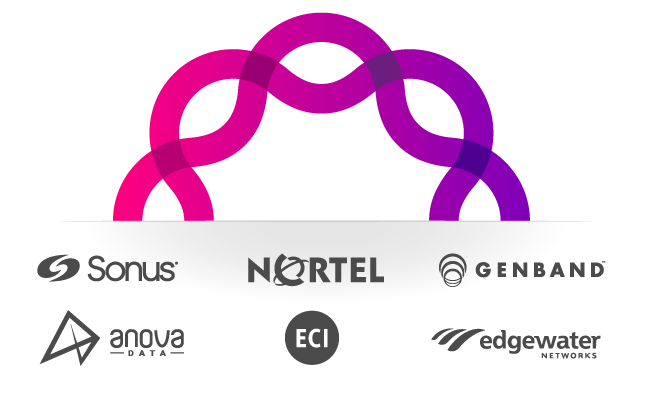Rail operators are paying increased attention to their aging IT/OT infrastructure – for good reason.
These days, rail operators rely on their communications network to support an increasingly varied and numerous set of legacy and modernized systems. There is access control, ticketing, information kiosks and display screens. There is video surveillance to monitor footfall, support facial recognition, assist in weapons detection, and provide information for crowd control. There is Wi-Fi and mobile connectivity in stations and on trains. And, of course, there are the general alarm and warning systems, signaling and control systems, telemetry systems, dispatch systems based on TETRA / Push-To-Talk technology and not least, Communications-Based Train Control (CBTC), and supervision and monitoring systems.
Advances like these have allowed operators to increase freight and passenger capacity by adding more trains to their networks and meet growing passenger expectations by offering amenities such as Wi-Fi access on board and in stations.
But modernization isn’t all a bed of roses. One of the downsides of increasing automation and digitization is an increased risk of cyber-attacks. Individual hackers, governments and private organizations are investing many resources in targeting, paralyzing and obstructing critical infrastructure. In an increasingly dangerous risk environment, cyber-attacks are increasing in both frequency and sophistication.
The problem is the aging IT/OT infrastructure.
Traditionally rail communications networks were based on extremely secure and robust TDM, SDH and SONET technologies. However, over the last decade and more things have evolved. IP and Ethernet are now the ubiquitous technologies for all modern services and applications and many of these modern applications require a vast amount of bandwidth. SDH/SONET is just not architected to efficiently support these packet services or the bandwidth they need.
Modernizing and migrating to telecoms systems based on up-to-date technologies such as IP/MPLS, MPLS-TP, Segment Routing, Flex-Ethernet, Carrier Ethernet and DWDM – optical transport – is inevitable. The big challenge for railway operators is choosing the best technologies and partnerships to make it happen.
We need to think about rail system cybersecurity and other critical functions in terms of IT/OT system modernization. In other words, your cybersecurity is only as good as your IT/OT systems and your people.
Utility companies, rail and air systems, energy producers and transporters, and even governments are all in the crosshairs. North America, Poland, Ukraine, and the UK have all suffered attacks recently. Any telecoms infrastructure modernization has to be supported by a risk and vulnerability analysis, before implementing systems to detect and prevent cyber-attacks. This requires a comprehensive multi-layered approach, vision, and strategy. For example, state-of-the-art UTMs (Unified Threat Management), firewalls, encryption systems, multi-layer and domain segmentation and partitioning, and SCADA-focused network anomaly detection systems for zero-day attack prevention and detection. In other words, protection from attacks using malware to penetrate firewalls and anti-virus systems, among others.
This might seem to be a daunting challenge, but Ribbon has the experience, skills and hardware to make modernization both seamless and effective.
Request a Meeting
Simply complete the form and a member of our team will reach out to discuss.
Determining return on investment on system modernization can be challenging because it is measured in various ways:
- Improved safety in both operations and maintenance activities, with a target of zero accidents.
- High availability, minimizing system downtime.
- Cyber security, to harden the communications networks against cyber-attacks, secure the safety of rail users, and protect active and passive meters.
- Better service and increased passengers and freight. The rail network is using more trains and transporting more freight and passengers. A modernized network must allow the rail infrastructure to be used with increased efficiency.
- Customer satisfaction. A modernized system should allow access to high quality, secure mobile broadband, allowing passengers to purchase tickets quickly and safely, monitor schedules and timetables in real time, and access work and entertainment applications from their mobile devices.
Webinar Replay: Deutsche Banh Network Deployment



Neptune IP Systems - At the forefront of next-generation IP transport technology with native 5G capabilities.
An upgraded communications network is key to providing rail operators with more control over their mission-critical IT and OT systems, and to providing their staff with better, more efficient services to manage the network. However, an improved communications network is also and opportunity to improve existing customer and passenger services and introduce new revenue-generating services, such as Wi-Fi and on-board advertising. The revenue generated from these paid-for services reduces the investment payback period and increases the ROI. Rail operators can also lease their fiber networks to other telecoms service providers, additional even more revenue. The path to support FRMCS will lead to the deployment of 5G-ready telecom infrastructure with advanced network slicing and accurate timing and synchronization mechanisms, further enabling rail operators to deliver advanced telecom services for external customers without compromising its own network needs.
The truth is, modernizing and migrating to telecoms systems based on up-to-date technologies such as IP/MPLS, MPLS-TP, Segment Routing, Flex-Ethernet, Carrier Ethernet and DWDM (optical transport) is inevitable. The big challenge for railway operators is choosing the best technologies and partnerships to make this process happen.
It’s light’s out for the rail industry’s aging IT/OT infrastructure. The only remaining question is, are you ready?
Apollo 100GbE & 400GbE Transport Solutions
Optical networks rely on two types of solutions to transport predominant 100GbE client traffic and increasingly important 400GbE client traffic.
The Economic Benefits of a Super-Converged Multi-Access Edge Network
As networks are upgraded there is an opportunity to converge multiple services on a single, integrated access network.
MuseTM Network Planner
Muse Network Planner is a next-generation planning tool for packet and optical networks, with forward-looking abilities for multilayer optimization...
Request a Meeting
We’re here to help you make an intelligent and graceful transition to cloud-based communications. Simply complete the form and a member of our team will reach out to discuss.
You May Not Know Our Brand, But You Know Us
Our heritage precedes us, but it does not define us — rather it guides us to develop reliable network solutions and to continually innovate.











